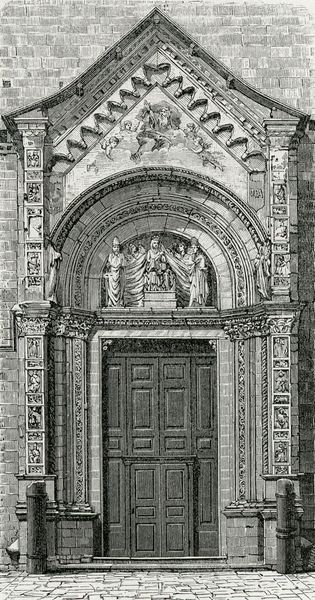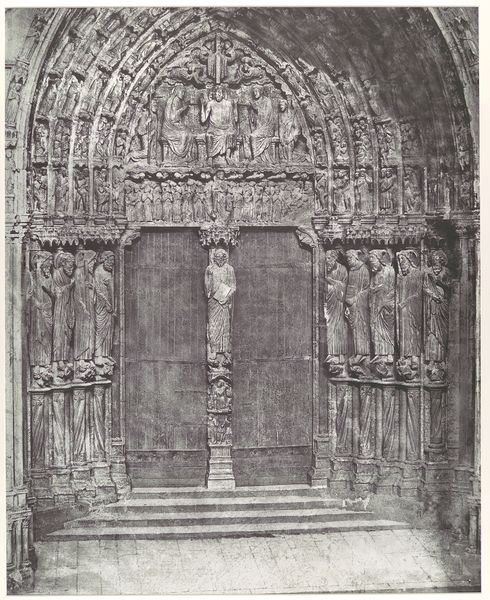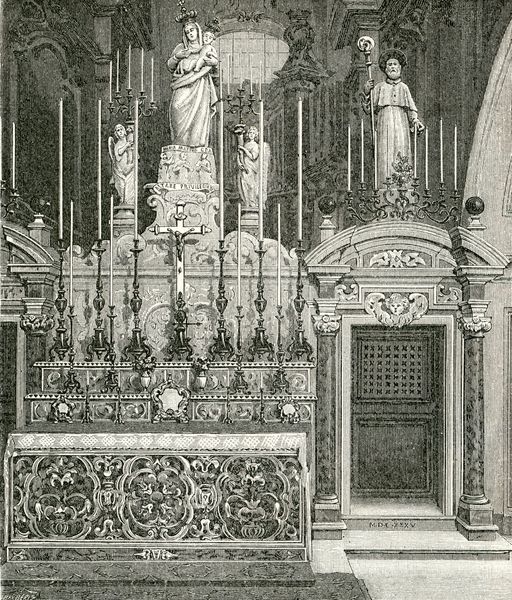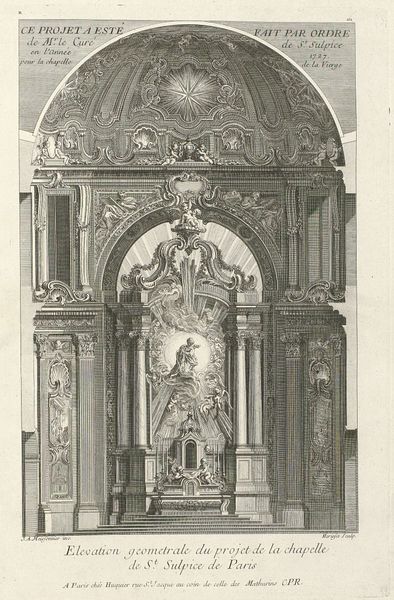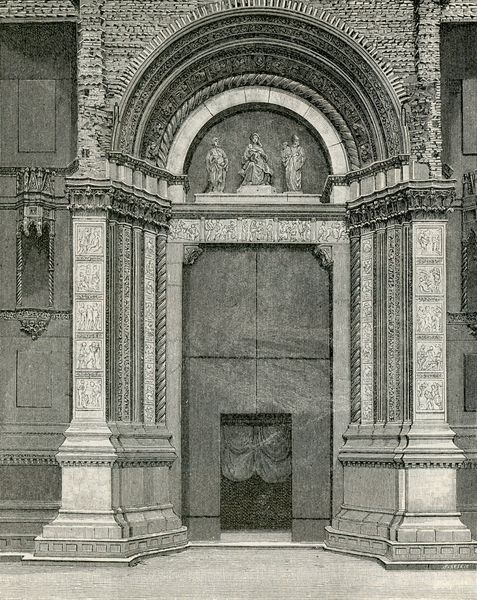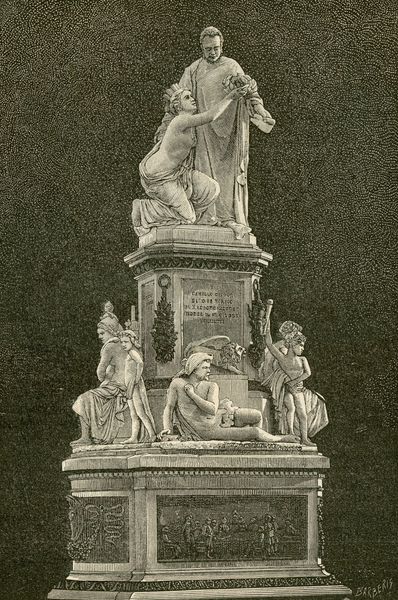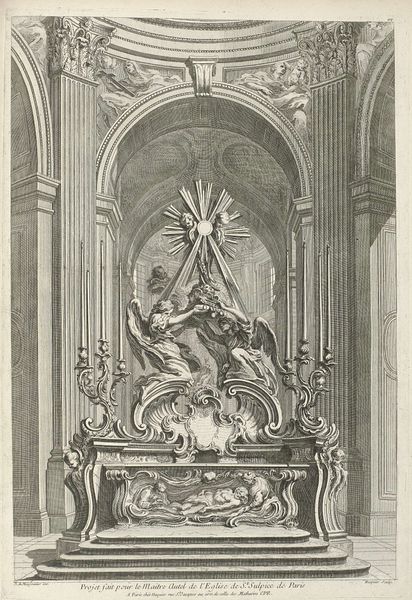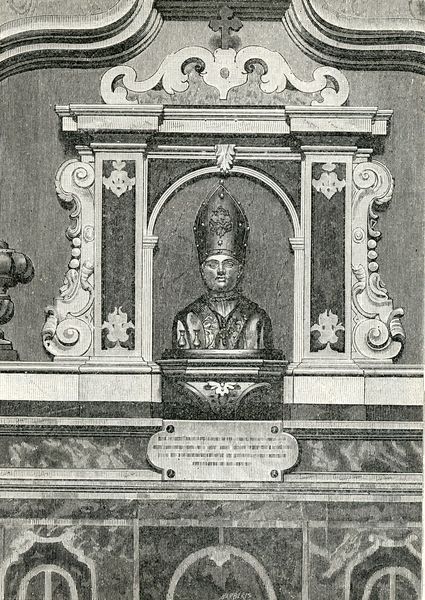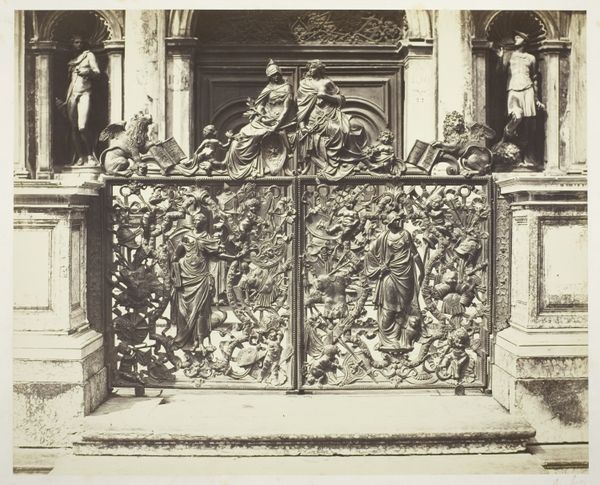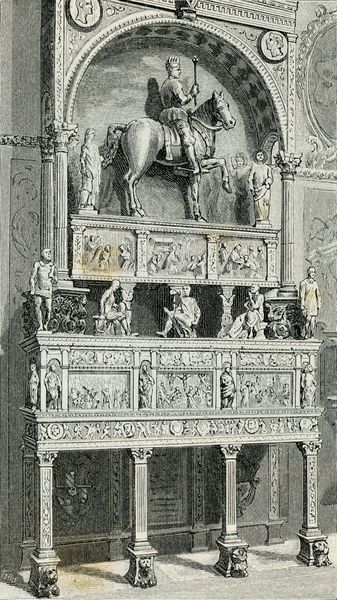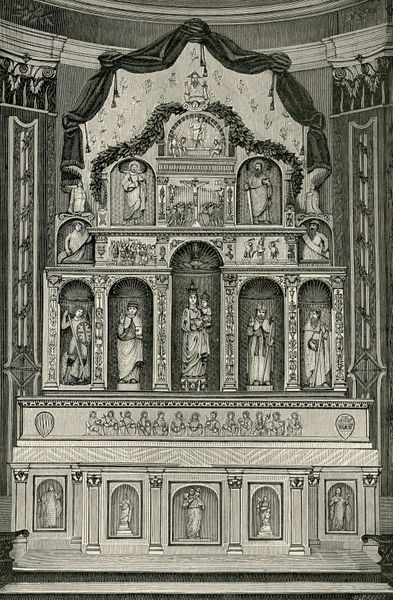
drawing, print, sculpture, engraving
#
portrait
#
drawing
#
historical design
#
medieval
# print
#
sculpture
#
sculpture
#
history-painting
#
trompe-l'oeil
#
italian-renaissance
#
engraving
#
historical building
#
statue
Copyright: Public domain
Editor: Okay, next up, we have Giuseppe Barberis' "Mausoleo Di Mess. Rozzello, Nella Chiesa Di San Francesco" from 1895. It’s a print, probably an engraving or etching of a sculpted mausoleum. It feels very… staged, like a theatrical presentation of history. How would you interpret this piece? Curator: The “staged” quality is interesting because it points to the way history is constructed and presented. Consider how nineteenth-century audiences consumed historical imagery. Prints like this circulated widely, shaping public perceptions of the past. What details stand out to you about the figures represented on the tomb? Editor: The figures around the crucifixion scene are striking, they look like they’re frozen in grief, very expressive but also stiff. And then, down below, those circular portraits feel very formal, like a roll call of important people. Curator: Exactly. The print offers a romanticized vision of medieval piety and power, framed through the lens of the late 19th century. Notice how the composition is carefully structured to create a sense of reverence, but what are the possible institutional uses or aims for producing and broadly sharing this kind of art? Editor: Hmmm…to me, it’s like a museum exhibit in print. Sort of a portable way to display and spread cultural values? It's almost a trompe-l'oeil; tricking the viewer into feeling that the sculpture is physically present? Curator: Precisely. It democratizes access to art, bringing historical artifacts to people outside of museums. This kind of print could reinforce national narratives, instilling a sense of pride and continuity in the Italian cultural heritage. The strategic distribution would serve to normalize certain beliefs about identity, leadership and history itself. Editor: So it's more than just a pretty picture, but an artifact representing how society shapes the understanding of itself through historical narrative? Curator: Precisely, yes. What an insightful note to conclude with! This piece highlights how art actively engages with, and ultimately constructs our historical perspective, influencing even present values and identities.
Comments
No comments
Be the first to comment and join the conversation on the ultimate creative platform.
